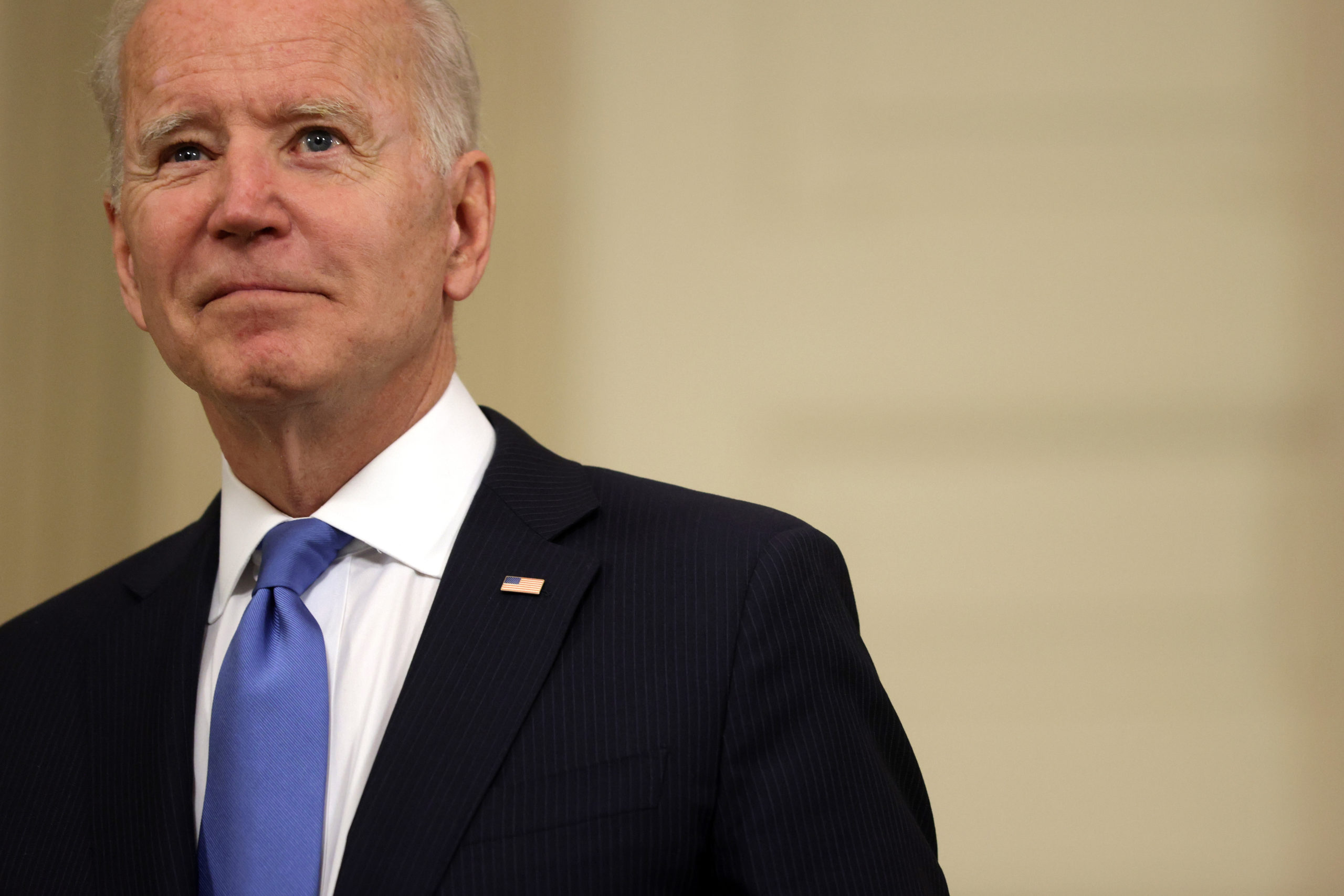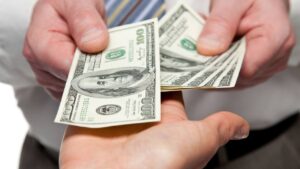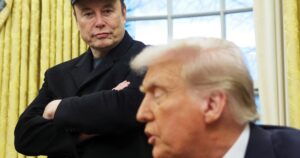https://newrepublic.com/article/162334/trickle-up-economics-biden-lbj-democrats
When Republicans began reformulating their tax philosophy in the late 1970s, they looked to their party’s policies in the 1920s for inspiration. I remember Jude Wanniski, the late conservative journalist, telling me that he knew nothing about Republican tax cuts in the 1920s until he read about them in Herb Stein’s 1969 book, The Fiscal Revolution in America. Today, Democrats may also find inspiration in economic debates of the 1920s—this one about whether underconsumption has slowed the rate of economic growth.
Overproduction has long been viewed as the root cause of economic downturns. This was called the “general glut” problem, and classical economists such as Thomas Malthus, David Ricardo, and Jean-Baptiste Say argued about whether it was inherent in the nature of capitalism. Eventually, neoclassical economists concluded that Say was right that the production process created enough income to purchase all of the output. Any gluts were temporary and the result of mistakes, not inherent in the system itself.
The Great Depression revived debate on whether it was possible to have too much production persistently; the flip side being whether there could be stubborn underconsumption. A British economist named J.A. Hobson thought underconsumption was a problem. Although the production process did produce enough income to absorb its output, he thought consumption didn’t rise concomitantly with income because some income is saved, which goes to further expand production. Hence there is a continual shortfall of consumption, causing overproduction.
Two American economists, William Foster and Waddill Catchings, developed a theory very similar to Hobson’s. As they explained in their 1928 book, The Road to Plenty, “[B]oth corporations and individuals must save; yet if they do save, they cause a shortage of consumer buying, which has to be made up in some way, or business depression results.” They concluded that increased government spending and deficits (negative saving) were necessary to fill the gap between aggregate income and consumption.
Franklin D. Roosevelt was familiar with the work of Foster and Catchings, although his initial impression of it was negative. A few years ago, Mike Konczal got the Roosevelt Presidential Library to supply him with Roosevelt’s personal copy of The Road to Plenty. In it, Roosevelt wrote in his own hand, “Too good to be true—you can’t get something for nothing.”
Of course, this was in 1928, in the midst of the “roaring twenties.” The Great Depression was nowhere in sight. And as governor of New York, which had to balance its budget annually, FDR was unsympathetic to deficit spending. In fact, he was quite orthodox in his beliefs about the federal budget well into the 1932 presidential campaign. In an October 19, 1932, speech, he berated President Herbert Hoover for his deficits and promised economy in government. “I regard reduction in Federal spending as one of the most important issues of this campaign,” Roosevelt said. “In my opinion it is the most direct and effective contribution that government can make to business.” (I have previously discussed the abuse of “business confidence” as an excuse to cut government spending.)
But at the same time, Roosevelt expressed increasing sympathy for the Hobson-Foster-Catchings view that underconsumption was at the root of the economic malaise. In a May 22 speech, he had this to say:
[O]ur basic trouble was not an insufficiency of capital. It was an insufficient distribution of buying power coupled with an oversufficient speculation in production. While wages rose in many of our industries, they did not as a whole rise proportionately to the reward to capital, and at the same time the purchasing power of other great groups of our population was permitted to shrink. We accumulated such a superabundance of capital that our great bankers were vying with each other, some of them employing questionable methods, in their efforts to lend this capital at home and abroad.
I believe that we are at the threshold of a fundamental change in our popular economic thought, that in the future we are going to think less about the producer and more about the consumer. Do what we may have to do to inject life into our ailing economic order, we cannot make it endure for long unless we can bring about a wiser, more equitable distribution of the national income.
Roosevelt went on to identify the failure of businesses to lower prices to increase sales as a key factor that led to underconsumption, which he saw as a major cause of the Great Depression. As he put it in his July 2, 1932, speech accepting the Democratic presidential nomination:
In the years before 1929 we know that this country had completed a vast cycle of building and inflation; for ten years we expanded on the theory of repairing the wastes of the War, but actually expanding far beyond that, and also beyond our natural and normal growth. Now it is worth remembering, and the cold figures of finance prove it, that during that time there was little or no drop in the prices that the consumer had to pay, although those same figures proved that the cost of production fell very greatly; corporate profit resulting from this period was enormous; at the same time little of that profit was devoted to the reduction of prices. The consumer was forgotten. Very little of it went into increased wages; the worker was forgotten, and by no means an adequate proportion was even paid out in dividends—the stockholder was forgotten.
In a September 23 speech, Roosevelt further identified industrial concentration and the maldistribution of income as underlying causes of underconsumption. “If the process of concentration goes on at the same rate,” he warned, “at the end of another century we shall have all American industry controlled by a dozen corporations, and run by perhaps a hundred men. Put plainly, we are steering a steady course toward economic oligarchy, if we are not there already.”
Industrial concentration, he went on to say, exacerbated the problem of underconsumption by allowing business to keep prices high and resist market forces. It was necessary to adjust production to consumption and achieve the task “of distributing wealth and production more equitably, of adapting existing economic organizations to the service of the people,” Roosevelt concluded.
In an October 6 speech, FDR pledged to use regulatory policy to bring about a more equitable distribution of income in order to provide citizens with the purchasing power to absorb excess production and rebalance the economy. “It is a proper concern of the government,” he said, “to use wise measures of regulation which will bring this purchasing power back to normal.”
In 1933, Marriner S. Eccles, president of a large Utah bank, became spokesman for the underconsumption view. In testimony before the Senate Finance Committee in February, he echoed FDR’s concerns about excessive saving, overproduction, and underconsumption. As Eccles told the committee:
The problem of production has been solved, and we need no further capital accumulation for the present, which could only be utilized in further increasing our productive facilities or extending further foreign credits. We have a complete economic plant able to supply a superabundance of not only all of the necessities of our people, but the comforts and luxuries as well. Our problem, then, becomes one purely of distribution. This can only be brought about by providing purchasing power sufficiently adequate to enable the people to obtain the consumption goods which we, as a nation, are able to produce. The economic system can serve no other purpose and expect to survive.
In January 1934, Eccles was appointed assistant secretary of the Treasury as a liaison to the Federal Reserve and related agencies. (In those days, the secretary of the Treasury was a member of the Federal Reserve Board.) Later that year, Eccles became chairman of the Federal Reserve Board, a position he held until 1948. In his memoirs, he explained (emphasis his):
As mass production has to be accompanied by mass consumption, mass consumption, in turn, implies a distribution of wealth—not of existing wealth, but of wealth as it is currently produced—to provide men with buying power equal to the amount of goods and services offered by the nation’s economic machinery.
Instead of achieving that kind of distribution, a giant suction pump had by 1929–30 drawn into a few hands an increasing portion of currently produced wealth. This served them as capital accumulations. But by taking purchasing power out of the hands of mass consumer, the savers denied to themselves the kind of effective demand for their products that would justify a reinvestment of their capital accumulations in new plants.… This naturally reduced the demand for goods of all kinds and brought on what seemed to be overproduction, but was in reality underconsumption when judged in terms of the real world instead of the money world.
Roosevelt, however, never committed himself wholly to the underconsumptionist view, and few economists endorsed it. Hobson, Foster, and Catchings were well outside the economic mainstream. However, in 1936, the eminent British economist John Maynard Keynes revived the underconsumptionist view in his book The General Theory of Employment Interest and Money. He argued that capital was not created by saving but by capitalists’ perceiving an increase in demand for their products. As Keynes wrote, “[C]apital is brought into existence not by the propensity to save but in response to the demand resulting from actual and prospective consumption.” Indeed, he argued that thrift was counterproductive to growth by diminishing consumption. He called this the “paradox of thrift.”
Subsequently, the Roosevelt-Keynes idea that increasing consumption was the key to economic growth became known as “trickle-up” economics, in contrast to the “trickle-down” policies of the Republicans, which saw the prosperity of the wealthy as the key to growth that would eventually benefit the masses. One of the first people to draw the trickle-up/trickle-down distinction was the Democratic humorist Will Rogers. In a November 26, 1932, column, he wrote:
The money was all appropriated for the top [under the Republicans] in the hopes that it would trickle down to the needy. Mr. Hoover was an engineer. He knew that water trickles down. Put it uphill and let it go and it will reach the driest little spot. But he didn’t know that money trickled up. Give it to the people at the bottom and the people at the top will have it before night, anyhow. But it will at least have passed through the poor fellows’ hands. They saved the big banks, but the little ones went up the flue.
This was in fact the historical Democratic point of view. William Jennings Bryan, three-time Democratic nominee for president, had articulated it in his famous “Cross of Gold” speech in 1896. “There are two ideas of government,” Bryan said. “There are those who believe that if you just legislate to make the well-to-do prosperous, that their prosperity will leak through on those below. The Democratic idea has been that if you legislate to make the masses prosperous their prosperity will find its way up and through every class that rests upon it.”
I bring up all this history because President Joe Biden made a revealing comment in his April 29 address to a joint session of Congress: “My fellow Americans, trickle-down—trickle-down—economics has never worked, and it’s time to grow the economy from the bottom and the middle out.” Biden is the first Democrat since Lyndon Johnson to forthrightly declare that trickle-up is the party’s philosophy of growth. Indeed, Biden’s program is reminiscent of Johnson’s declaration on January 15, 1964, launching the Great Society: “We are going to try to take all the money that we think is unnecessarily being spent and take it from the ‘haves’ and give it to the ‘have nots’ that need it so much.”
The tragedy of Vietnam and the stagflation of the 1970s killed the trickle-up vision. In the late 1970s, Republicans counterattacked with an updated, more sophisticated version of trickle-down called “supply-side economics.” Every Republican since then has lived by it. Subsequent Democratic presidents essentially endorsed its key tenets—relatively small government, light taxation of capital and the wealthy, social programs implemented exclusively via tax credits—and appeared fearful of articulating a truly progressive vision. Who can forget President Bill Clinton’s capitulation to the Republicans in his 1996 State of the Union Address: “The era of big government is over”?
But the long stagnation in real wages and the massive growth of income inequality are at long last leading economists back to the underconsumptionist viewpoint.

















